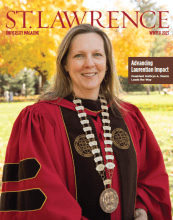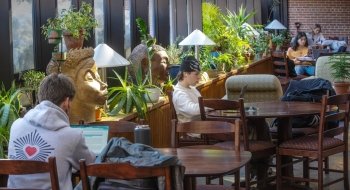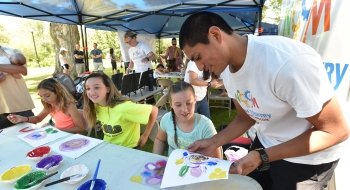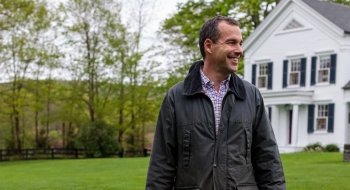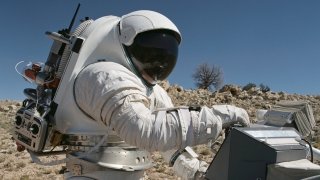
How Dean Eppler ’74 launched a career from Canton to the Moon.
These days, it would not be unusual to find Dean Eppler ’74 talking on the phone with space; more specifically, with at least one colleague asking questions about features on the Earth’s surface they were seeing from orbit aboard the International Space Station.
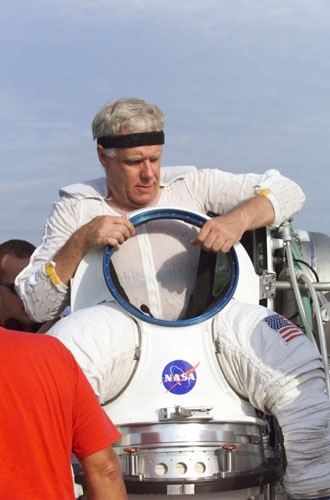
At first glance, it might be hard to trace the path from a small, liberal arts university in Northern New York to testing space suits in flight simulation mechanisms like NASA’s “Vomit Comet” as a senior scientist for NASA. However, that is precisely the trajectory that Eppler followed using his geology training as an undergraduate at St. Lawrence and his graduate work at the University of New Mexico and Arizona State University.
Before joining NASA, Eppler worked as a U.S. Army combat engineer officer at Fort Carson, Colorado, for four years before completing a doctorate in geology from ASU in 1984. However, Eppler credits his liberal arts background for the opportunities he received after joining the NASA team of engineers. Eppler remembers being told by his mentor and lead advanced space suit designer that expecting engineers to know what a field geologist needs in a suit would be futile, so Eppler was enlisted to help engineers understand what features would allow a field geologist to succeed in the suit. Collaborating with peers was a familiar workflow for Eppler, having spent very late nights in Brown Hall problem-solving with his fellow geology majors at St. Lawrence.
“Some of us actually slept on the department furniture in the majors’ room more than one night a week if we had just gotten done with some project. Either it was too cold to go back to Hulett and Jencks, or it was 3:00 in the morning and you had an 8:00 a.m. class,” says Eppler. “So, you might as well just catch a few hours in Brown.”
His experiences at St. Lawrence were diverse and his post-doctoral research equally so. Eppler’s research has involved everything from findings on the 400-year-old Chaos Jumbles rock-fall deposit and the May 1915 blast and lahar deposits in Lassen Volcanic National Park, California to the preliminary examination of team activities at the Johnson Space Center after Apollo 17.
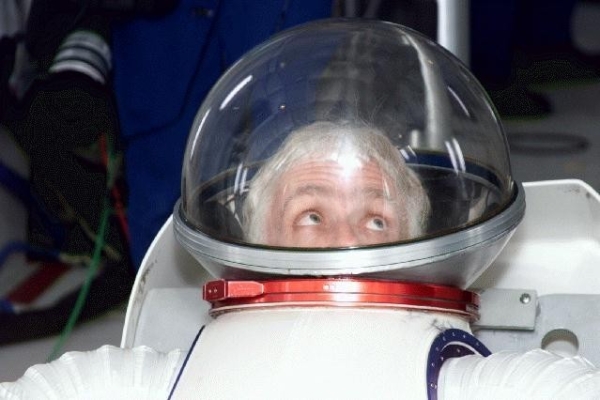
He spent a season in Antarctica with his Ph.D. advisor, Mike Malin, principal investigator for the Mars Observer Camera, to research long-term rates of weathering and erosion in cold desert environments. Between 1984 and 1986, Eppler held a position at Los Alamos National Laboratory conducting geothermal energy exploration in Central America and investigating the effect of airborne volcanic ash on air transport aircraft. In 1986, he joined the Science Applications International Corporation.
In 1990, with a move to Houston, Texas, Eppler began working with NASA as a senior scientist and discipline manager for Earth science research teams working on the International Space Station Program. He was also the principal suit test subject for advanced planetary space suit development at the Johnson Space Center. In 2009, Eppler took over the geologic training for the agency with his primary students being the NASA Astronaut Corps.
Now, Eppler says he can look back and laugh about not quite reaching his dream of becoming an astronaut. In his application process to join NASA’s astronaut crew, Eppler had been interviewed three times for the selection in 1990, 1996, and 1998. While he wasn’t chosen to be a crew member, Eppler still considers it an honor.
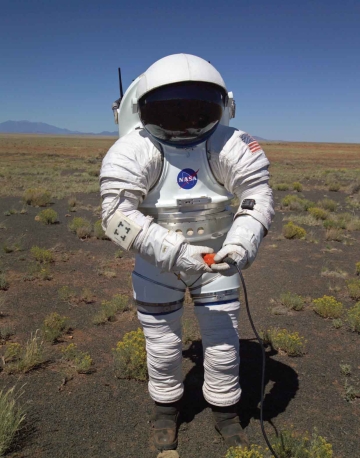
“At first, when you don’t get selected, you’re pretty down, but you start to realize that between 5,000 and 10,000 people are sending their applications in and you were in the top 100,” says Eppler. “You start to realize that’s quite an achievement. So, I think probably, that’s the best disaster that ever happened to me.”
After retiring in 2016 with more than 25 years working with NASA, Eppler continued to work at the Aerospace Corporation and for Blue Origin as a member of the Lunar Science Advisory Board for lunar science payloads, operations, and landing site selections. At this point, most of the American astronauts set to join the International Space Station have been trained by Eppler and a diverse team of geologists, including Barb Jarvis Tewskbury ’73, professor of geosciences at Hamilton College.
These days, Dean Eppler can be found visiting campus, back in Brown Hall once again to mentor undergraduates during the triennial St. Lawrence University Geology Alumni Conference (SLUGAC). He also stays active bicycling, relearning photography, and studying martial art Kuk Sool Won, getting back into flying as an aerobatic pilot, riding horses on South Texas trails, or possibly talking to his colleagues and friends in space.

